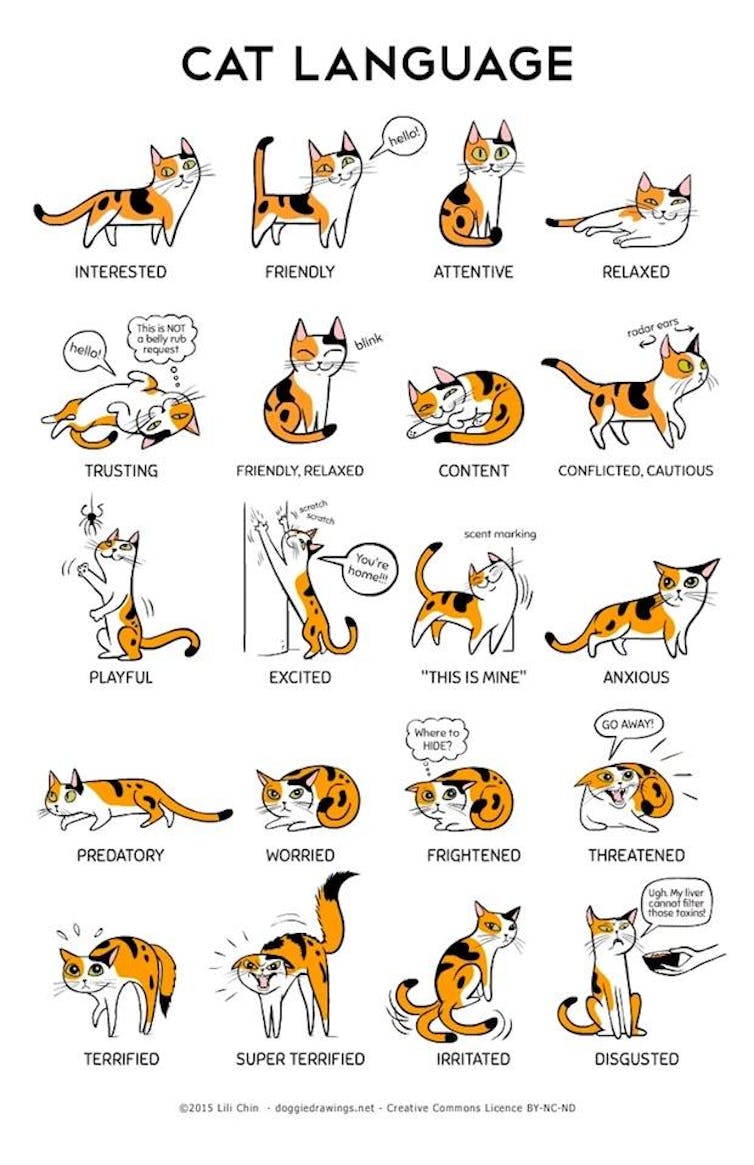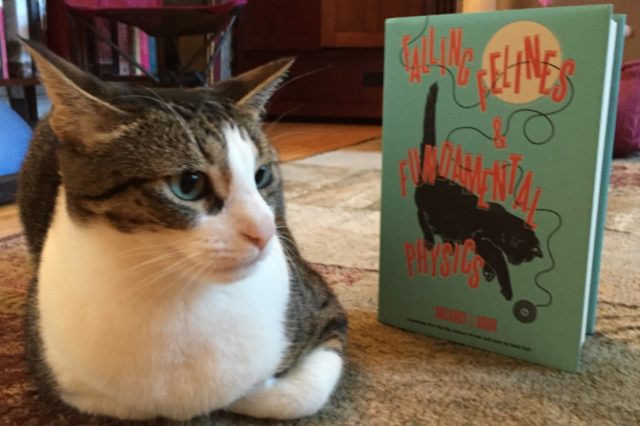What a ‘cat friendly’ veterinary experience looks like
IMAGE: A SOFT HAND IS EXTENDED BY THIS VETERINARY TEAM MEMBER TO INVITE THE CAT TO INITIATE CONTACT. THIS IS A MORE CAT FRIENDLY AND RESPECTFUL APPROACH THAN IMMEDIATELY PICKING UP AND RESTRAINING THE PATIENT. view more
CREDIT: ELLEN CAROZZA LVT, VTS (CP-FELINE)
Good feline healthcare necessitates visiting the veterinary clinic, but many components of a veterinary visit or stay may potentially result in negative experiences. The impacts can be far-reaching, including distress and prolonged recovery from illness for the cat, and, for the veterinary team, the risk of misleading clinical findings and test results, possible injury and further difficulties with handling of the cat at future visits. Mounting evidence suggests that first veterinary visits can impact a young animal for life.
The cat’s veterinary experience includes their journey to the clinic, their interactions with team members, the social environment (other animals in the waiting and hospitalisation areas), as well as the physical environment of the clinic. These aspects are all addressed in two ‘Cat Friendly Guidelines’1,2 published jointly by the International Society of Feline Medicine (ISFM) and the American Association of Feline Practitioners (AAFP). They appear in a Cat Friendly Special Issue of the Journal of Feline Medicine and Surgery (JFMS) and are available, together with a suite of supporting information and resources, at bit.ly/JFMSCatFriendly.
The ‘2022 AAFP/ISFM Cat Friendly Veterinary Interaction Guidelines: Approach and Handling Techniques’1 and ‘2022 ISFM/AAFP Cat Friendly Veterinary Environment Guidelines’2 are directed at veterinary professionals around the world. They are authored by experts in feline clinical medicine and behaviour, who have undertaken an extensive literature review and have also drawn on valuable experience gained in the 10 years that the ISFM’s Cat Friendly Clinic (catfriendlyclinic.org) and AAFP’s Cat Friendly Practice (catvets.com/cfp) programmes have been running and contributing so positively to feline health and wellbeing. To date, almost 3700 clinics and practices across 57 countries have achieved official ‘Cat Friendly’ status under the programmes.
At the heart of the new guidance – richly illustrated with images from some of these Cat Friendly Clinics and Practices – is the recognition that mental wellbeing is as equally important as physical health. The Cat Friendly Guidelines put the cat’s emotional experience at the forefront of all veterinary interactions, and integrate some new terminology: a cat’s positive emotions, which, for example, might lead them to explore the environment and seek food, treats, play and social interaction, are reframed as ‘engaging’ emotions, while the negative emotions of fear, anxiety, frustration and pain are referred to as ‘protective’ emotions. This approach will help the veterinary team to better understand the feline perspective, identify underlying stressors and establish what works to resolve the situation rather than exacerbate it.
To be truly cat friendly, all team members need an understanding of cats, not only as individuals, but as a species. Much of the characteristic behaviour of cats is derived from their wildcat ancestor, Felis silvestris lybica, in particular their natural preference to rely on themselves for protection. Familiarity, control, predictability and avoidance of threats all contribute to their perceived safety. In an unfamiliar situation, the preferred strategy for most cats is to escape. When this option is unavailable, such as in the veterinary clinic, they instead attempt to hide or to perch to monitor the environment from above.
The Cat Friendly Guidelines offer myriad practical tips for both minimising negative experiences and promoting positive experiences. ‘Thinking cat’ extends to educating the caregiver on how best to prepare the cat for their trip to the veterinary clinic, and is as fundamental as considering what the patient, with their highly tuned sensory system, will see, hear and smell during their visit to the clinic. The advice includes minimising visual stimulation – even pictures of cats and other animals can be perceived as threatening. Cats should be kept away from noisy patients and loud clinic equipment, and all human vocalisation should be soft, gentle and slow in tempo. For the majority of practices that treat dogs as well as cats, removing potentially challenging scents by sweeping up dog hair and emptying bins of strong-smelling waste, such as urine, is important, and synthetic feline pheromones can be used to help create a more reassuring environment. Importantly, adjustments to establish a more cat friendly veterinary environment need not be structural or expensive, and a range of ways of providing cat-only waiting areas and hiding and perching options in cages are suggested.
Likewise, the veterinary team need to remain ‘cat focused’ during all interactions. Being aware of cats’ preferred areas of touch – particularly in the region of the facial glands, which produce the pheromones used in social bonding – helps to encourage positive emotions during the clinical examination, while simple steps, such as not leaning over or cornering the cat, and avoiding direct eye contact, help to ease anxiety. Allowing the cat to remain in the bottom of their carrier, or using towels or a high-sided cat bed to encourage a sensation of being hidden and protected, can be very beneficial. Significantly, by practising cat friendly interactions and providing a cat friendly veterinary environment, equipment that historically has been used for cat restraint, including cat bags, gauntlets and muzzles, quickly comes to be replaced by items that provide the patient with comfort, a sense of safety and choice, and positive distractions. In certain situations, the use of anti-anxiety medication is also appropriate, and the Cat Friendly Guidelines discuss protocols for strategic use prior to or during the veterinary visit.
So, what next for cats, their caregivers and the veterinary team? The concept of ‘cooperative care’ is described as being the future for ‘cat friendly’. This will require new skills to be developed and practised, both at home and in the veterinary practice, to help cats feel more relaxed and in control in medical situations where they may naturally feel fearful and/or frustrated. More immediately, each veterinary team is encouraged to look at even the smallest adjustments they can make to their own veterinary environment and interactions to improve the experience for cats and their caregivers.
For the Cat Friendly Guidelines Co-Chairs, veterinarians Ilona Rodan, Nathalie Dowgray, Samantha Taylor and Kelly St Denis, the publication of the Cat Friendly Special Issue of JFMS is a pivotal moment. ‘We’re thrilled the Cat Friendly Guidelines will be available to all veterinary professionals because they are a game changer. They will enhance feline welfare, caregiver loyalty and human safety, and mean more positive veterinary visits for all!’
References
- Rodan I, Dowgray N, Carney HC, et al. 2022 AAFP/ISFM cat friendly veterinary interaction guidelines: approach and handling techniques. J Feline Med Surg 2022; 24: 1093–1132. Available at: https://journals.sagepub.com/doi/full/10.1177/1098612X221128760.
- Taylor S, St Denis K, Collins S, et al. 2022 ISFM/AAFP cat friendly veterinary environment guidelines. J Feline Med Surg 2002; 24: 1133–1163. Available at: https://journals.sagepub.com/doi/full/10.1177/ 1098612X221128763.
JOURNAL
Journal of Feline Medicine and Surgery
SUBJECT OF RESEARCH
Animals
ARTICLE TITLE
2022 AAFP/ISFM Cat Friendly Veterinary Interaction Guidelines: Approach and Handling Techniques
ARTICLE PUBLICATION DATE
2-Nov-2022







/bnn/media/media_files/9874d1e57151f4ebd57adc1a829d2335bb8513be0e15efa34b873ce17dc50f18.jpg)

